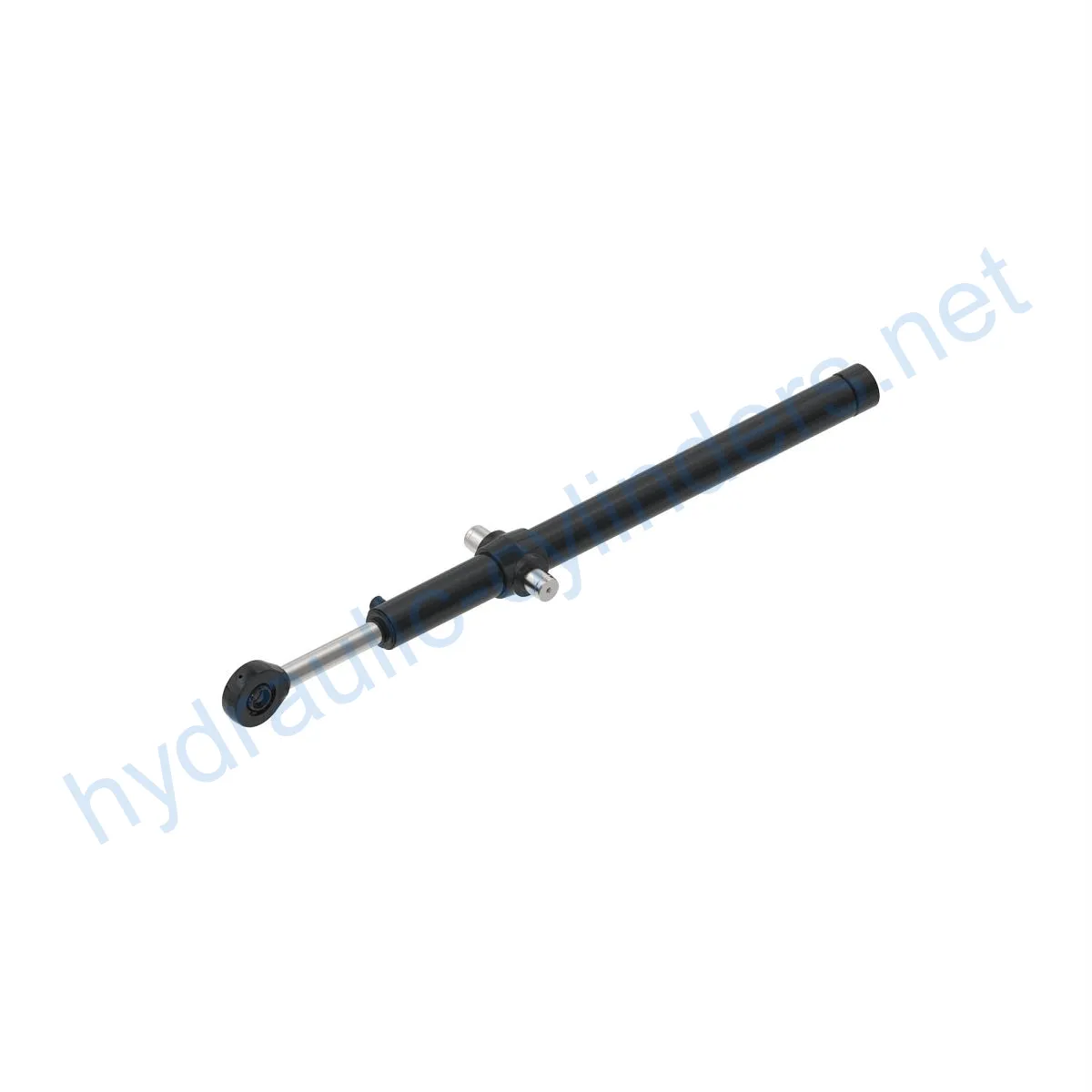Replacement Of AHC16063 Lift Hydraulic Cylinder
Replacement Of AHC16063 Lift Hydraulic Cylinder
Introduction:
The Replacement Of AHC16063 Lift Hydraulic Cylinder is a vital component used in various machinery such as the 850J, 850J-II, and 850JR models. This hydraulic cylinder plays a crucial role in lifting heavy loads and ensuring the smooth operation of the equipment.
Specifications:
- Weight: 178.5 lb
- Height: 6.5 in
- Width: 11 in
- Length: 75.5 in
Models:
- 850J
- 850J-II
- 850JR
Key Features:
- Improved Equipment Performance: Replacing damaged or worn-out hydraulic cylinders restores the equipment’s normal operational capabilities, ensuring optimal performance in various applications.
- Enhanced Safety: Regularly replacing hydraulic cylinders reduces safety hazards caused by cylinder failures, ensuring the safety of operators and equipment.
- Overload Protection: New cylinder designs often incorporate better overload protection mechanisms, enhancing overall safety.
- Quick Installation: Modern hydraulic cylinders are designed for easy installation and replacement, reducing downtime.
- Standardized Components: Many hydraulic cylinders are standardized products, making it easier to obtain replacement parts in the market.
We specialize in manufacturing hydraulic cylinders that perfectly replace the ones mentioned above. Our products are designed to meet the highest standards and provide reliable performance.
Applications:
- Excavators: Hydraulic cylinders in excavators, such as the boom or bucket cylinders, can get damaged due to prolonged use or overload. Replacing them is essential to restore normal operation.
- Cranes: Hydraulic cylinders in crane boom lifting systems are prone to wear and tear due to frequent lifting and lowering. Regular replacement ensures safety.
- Tractors: Front-end loader hydraulic cylinders in tractors may experience leaks or performance degradation during continuous lifting and tilting operations, requiring replacement.
- Harvesters: Hydraulic systems in harvesters endure high pressure during the harvesting process, and fatigue can damage the cylinders. Timely replacement is crucial to maintain work efficiency.
- Automated Production Lines: Hydraulic cylinders control robotic arms and other automated equipment. Cylinder failures can disrupt production efficiency, necessitating immediate replacement.
- Die-casting Machines: Hydraulic cylinders in die-casting machines may experience performance degradation in high-pressure and high-temperature environments. Regular replacement ensures product quality.
- Mining Equipment: Hydraulic cylinders are used in lifting and moving heavy loads in mining equipment. Regular inspections and replacements are necessary to avoid equipment malfunctions.
- Bulldozers: The wear of hydraulic cylinders in the bulldozer’s blade can lead to a decrease in pushing ability. Timely replacement is necessary to maintain operational efficiency.
Maintenance Tasks:
- Regular Inspections: Periodically inspecting hydraulic cylinders helps identify any signs of wear, leakage, or damage that may affect performance.
- Proper Lubrication: Adequate lubrication is crucial for the smooth operation of hydraulic cylinders. Using the right lubricants and following manufacturer recommendations is essential.
- Seal Replacement and Calibration Checks: Replacing worn-out seals and calibrating hydraulic cylinders ensures optimal performance and prevents leaks.
During installation, it is important to provide proper alignment guidance and recommend the use of suitable mounting brackets to secure the cylinders. We offer inspection, repair, and replacement services to extend the lifespan of your hydraulic cylinders.
Safety Considerations and Environmental Factors:
When using hydraulic cylinders, adhering to safety measures is vital to prevent accidents and ensure operator well-being. It is important to consider environmental factors and use appropriate safety precautions when working with hydraulic cylinders.
Troubleshooting and Common Issues:
1. Cylinder Leakage:
Solution: Inspect the seals and replace any damaged ones. Ensure proper installation and calibration of the cylinder.
2. Slow Cylinder Movement:
Solution: Check the hydraulic fluid levels and ensure proper lubrication. Evaluate the hydraulic system for any blockages or malfunctions.
3. Excessive Noise or Vibrations:
Solution: Inspect the cylinder for loose or damaged components. Tighten or replace as necessary. Check the mounting brackets for stability.
4. Cylinder Drift:
Solution: Check the hydraulic control valve for any malfunctions. Adjust or replace the valve as needed. Inspect the cylinder for any internal leaks.
Preventive Measures:
To minimize potential issues, it is recommended to perform regular maintenance tasks such as inspections, lubrication, seal replacements, and calibration checks. Following proper installation guidelines and utilizing suitable mounting brackets can significantly improve the lifespan of hydraulic cylinders.

Design Considerations and Selection Criteria:
When selecting hydraulic cylinders, several design considerations should be taken into account, including load-bearing capacity, sealing effectiveness, durability, safety features, and ease of maintenance. Each aspect contributes to the overall performance and longevity of the cylinder.
Sealing and Lubrication:
Hydraulic cylinders incorporate various sealing elements, such as piston seals and rod seals, made from wear-resistant materials like polyurethane and nitrile rubber. The cylinder body and threaded end surfaces undergo precise processing to enhance wear resistance. Regular lubrication with the appropriate hydraulic oil is necessary to ensure smooth operation.
Regular Inspection and Preventive Maintenance:
Regularly inspecting hydraulic cylinders for signs of wear, leakage, and damage is essential for identifying and resolving issues promptly. Adequate preventive maintenance measures, such as seal replacements and calibrations, optimize the performance and extend the lifespan of the hydraulic cylinders.
Proper Installation Guide:
1. Align the cylinder properly and ensure it is securely fastened.
2. Follow the manufacturer’s guidelines for installation, including torque specifications for bolts and fittings.
3. Use suitable mounting brackets to stabilize the cylinder and prevent unnecessary vibrations.
Safety Considerations and Environmental Factors:
When using hydraulic cylinders, it is crucial to prioritize safety measures to protect personnel and equipment. Adhering to safety guidelines and implementing proper environmental considerations ensures a secure working environment.
Troubleshooting and Common Issues:
1. Cylinder Leakage:
Solution: Inspect the seals and replace them if necessary. Check for any damaged components or misalignment.
2. Slow Cylinder Movement:
Solution: Verify the hydraulic fluid levels and ensure proper lubrication. Examine the hydraulic system for any blockages or malfunctions.
3. Excessive Noise or Vibrations:
Solution: Inspect the cylinder for loose or damaged parts. Tight
参观我们的 VR 工厂
通过以下方式参观我们的 VR 工厂
液压缸应用:


